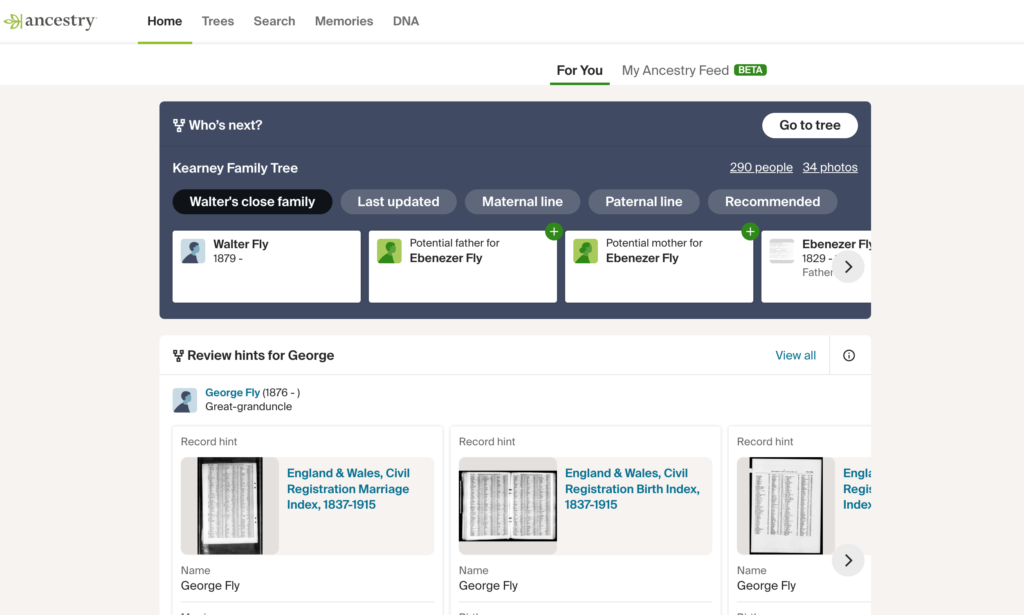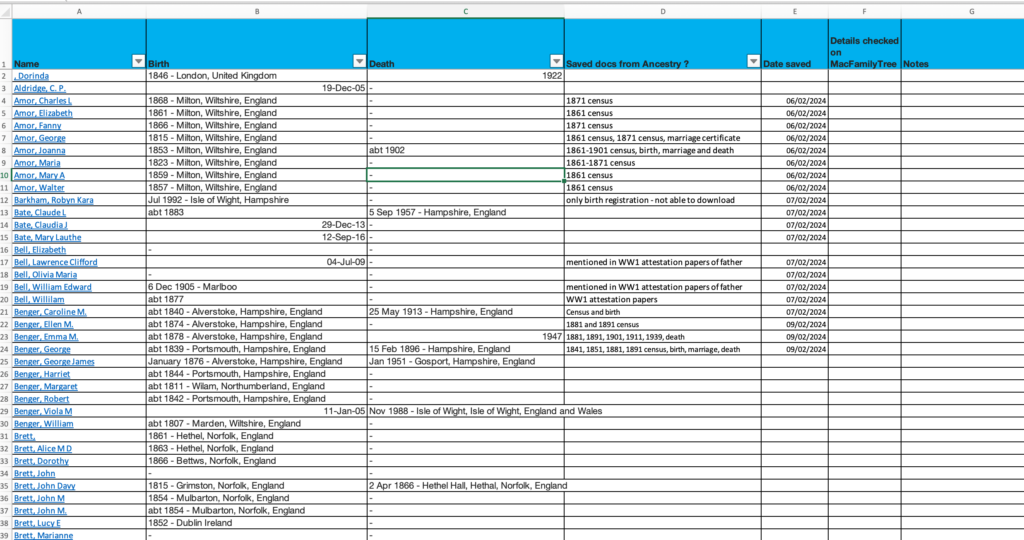Last night I was very excited to email my mum to tell her about my latest family history discovery. Although I am supposed to be concentrating on downloading all my certificates and documents from Ancestry for some reason I have gone completely off track this week.
I signed up to a 7-day free trial of Find My Past in the hope I could find the marriage of my paternal great-grandparents, Mansel Young and Catherine Carroll. The site has changed a lot since I last logged in, and it feels more like Ancestry.
Anyway, I filled in a basic tree and it gave me a hint for my grandfather Henry Young during the First World War. I had always assumed that he was too young to serve in the War and I assumed that the ‘On War Service’ badge which came to me on the death of my grandmother may have belonged to him.
Henry Harper Young
Henry Young was a common name at the time but I thought I would click through the suggested First World War service records. Imagine my surprise when I saw a record for Henry Young living in Woodland Street, Portsmouth, the very same street the family were living in at the time of the 1901 census! The records were from the Burnt Records series, so very few survived – they give a great deal of information which I would dearly love to know about his brother, Alfred Young.
I carried on reading through the documents but found the age was a year out (age 19 in 1915). However, the occupation was given as outfitter at Read & Co, Osborne Road, Portsmouth which seemed familiar to me.
I did a little more digging and fact checking:
- I checked his date of birth against the birth certificate I have – he was born 8th June 1897 so would have been 18 when he enlisted on 23rd October 1915. On 16th October the Derby scheme had come into effect, giving men their last chance to enlist voluntarily. He signed up a week later.
- I checked the address he gave as 4 Woodland Street Portsmouth. In the 1901 census the family lived at 2 Woodland Cottage, Woodland Street at the time of the 1901 census, 13 Woodland Street on the 1911 census, 4 Woodland Street is listed in the 1921 Rate Book for Portsmouth. It seems the family moved around the same street over a period of at least 20 years.
- I checked his occupation and found his occupation at the time of the 1911 census was errand boy for a milliners, by the time of the 1921 census he put his occupation as tailor’s assistant at Read & Company, Portsmouth (out of work).
- For some reason he had completed the 1911 census return and signed it, so I was also able to check his signature on the census return matched the one on the Statement to Disability form.
Then I dug out the few photos I have of my grandfather as a young man and noticed he was wearing uniform. There are only 2 photos of him, and one of his brother, I assumed they were of the same person. Although the uniform is standard now I can see that the cap badges look different.
Anyway I wrote and told my mum this and she pinged me straight back as she already knew this, and thought I knew it too!
We don’t have anything about his war service, his medals are no longer around and my mum thinks my grandmother may have given these away at some point.
So, I guess my point is never to assume anything because you are probably wrong, and also use as many documents as you have to cross check facts.




